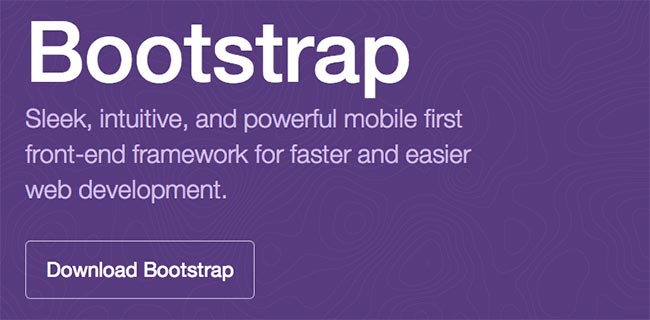Twitter Bootstrap: Pros & Cons
Last week, I wrote “More Useful Tools in Web Development” where I discussed some tools that I recently found to be useful in my development process. Today, I will focus more on Twitter Bootstrap and share my thoughts as a front end web developer on this framework.

Overview
Bootstrap was developed by Twitter. Bootstrap 3 was recently released in August 2013. Getting started with Bootstrap is as simple as downloading the files from the Bootstrap website.
Pros
I mentioned some good aspects of Bootstrap in my last blog post, such as responsiveness, grid system, and default styles. Some more pros of using Twitter Bootstrap are:
- Cross-Browser Compatibility – Twitter Bootstrap is cross browser compatible right out of the box because it was made that way. Therefore, you don’t have to worry too much about breaking things in certain browsers (ex. Internet Explorer) when you are using Bootstrap components.
- LESS – I slightly touched on this in the last blog post, but LESS is a CSS preprocessor, and Twitter Bootstrap is built on it. There are many advantages of using LESS, but personally it makes my development process so much faster.
- Customizable – Speaking of LESS, Bootstrap is customizable. The easier way to customize it will be to make your custom build of Bootstrap. However, if you know LESS, you could edit the Bootstrap LESS files.
Cons
Although there are many advantages of using Bootstrap, there are some things that I find to be limitations.
- Learning Curve – As with any framework or any other toolkit or system, there will be a learning curve of sorts. Depending on the developer’s knowledge of front end technologies, it might take longer to fully understand. However, after the initial learning period, it will be easy to get started with Bootstrap.
- Limited Designs – Personally, I think many websites that use Twitter Bootstrap look very similar. Because Bootstrap works in a certain way with all its features and by using Bootstrap, you have to generally stay within Bootstrap’s constraints. Doing so could limit the website design.
- Semantics – I previously wrote a blog post on semantics, and some features of Bootstrap are not very semantic. For example, Twitter Bootstrap uses a lot of CSS classes. For example, you need to use
btn btn-lg btn-primaryto make a large big blue button in Twitter Bootstrap. Also, most of the CSS classes have to do with the presentation, not content, which isn’t very semantic.
Conclusion
Twitter Bootstrap is a great tool to use in web development. There are many pros in Twitter Bootstrap that outweigh the cons. If you are looking for a custom design for your website, contact us for a quote.
By: Blueprint
The comments are closed.
No reviews yet



